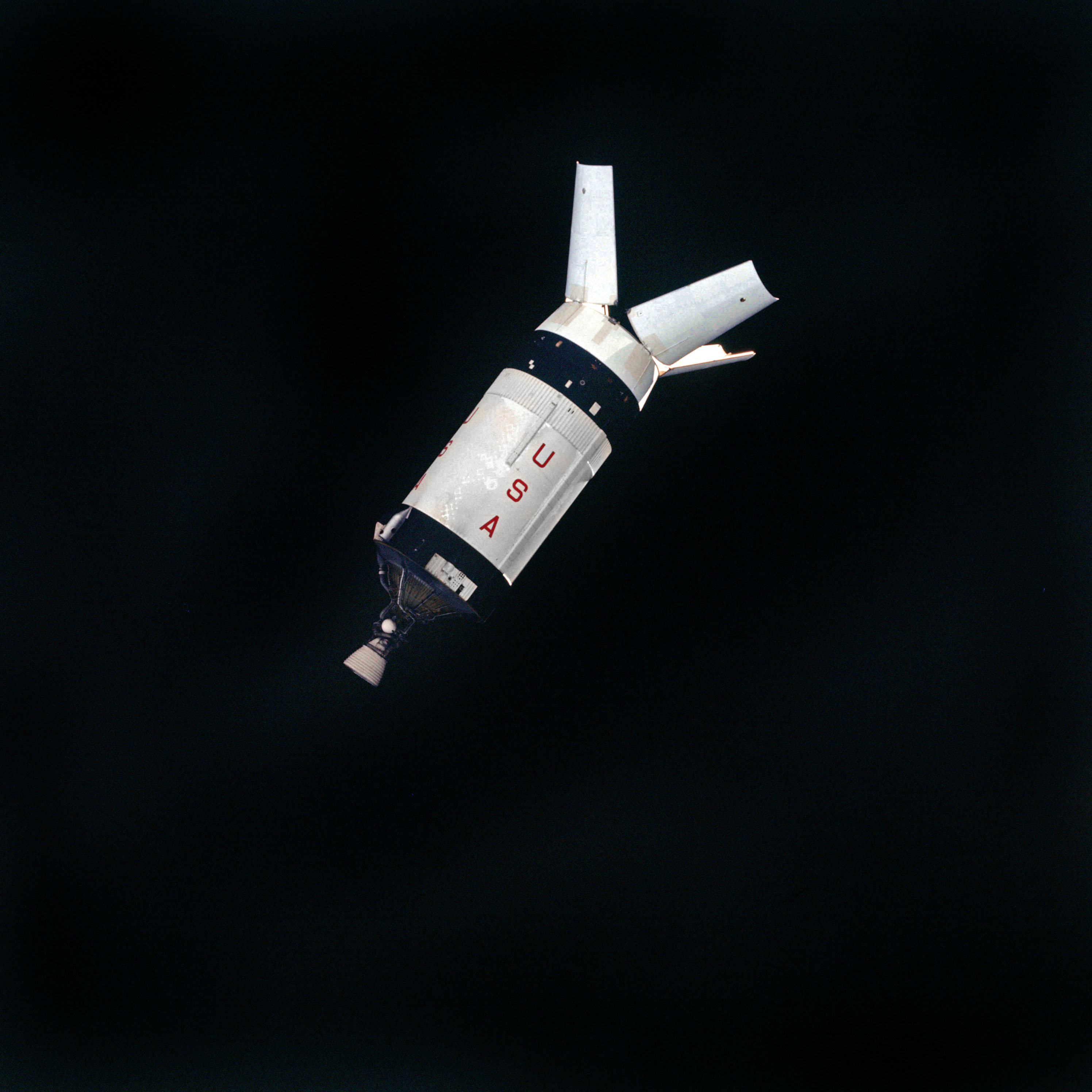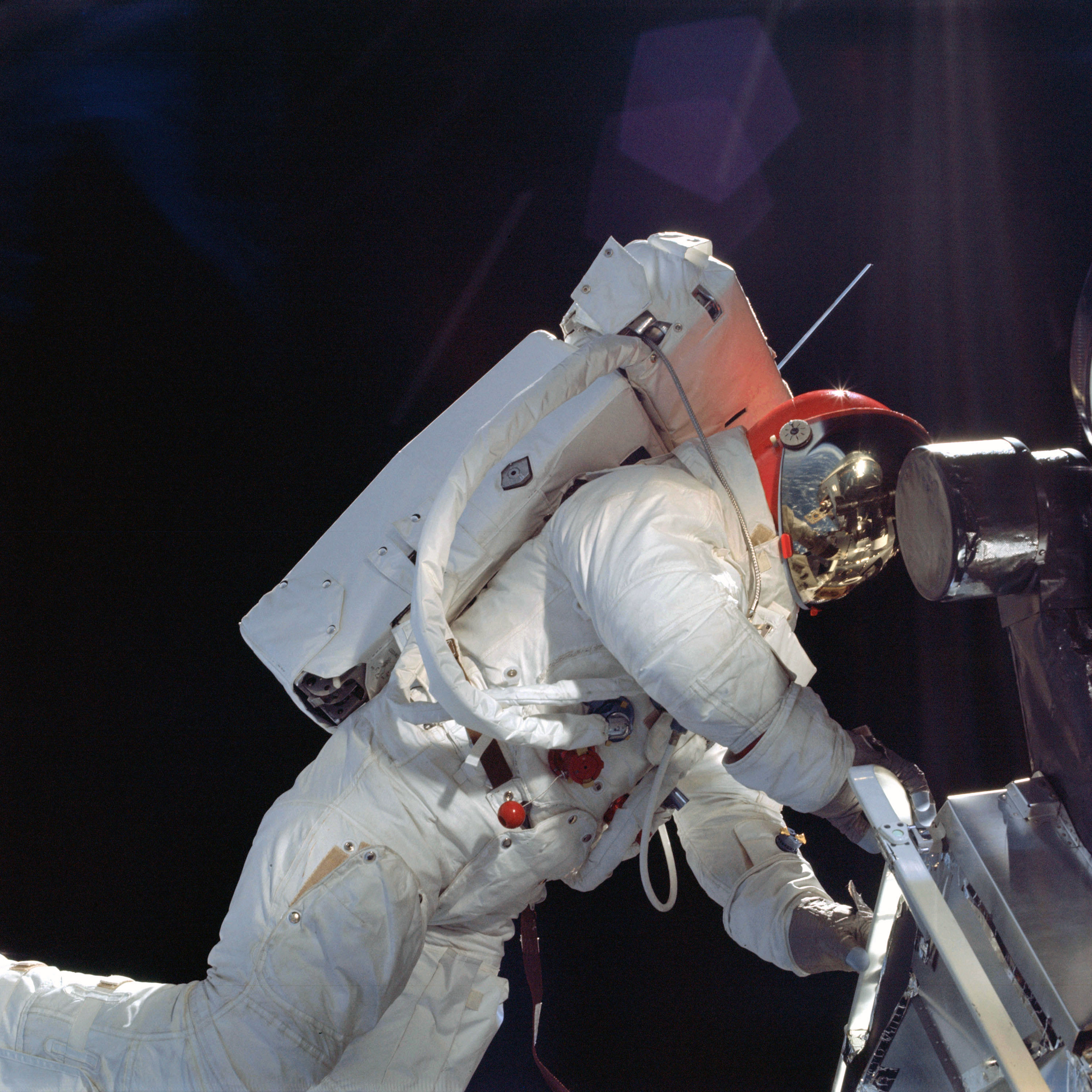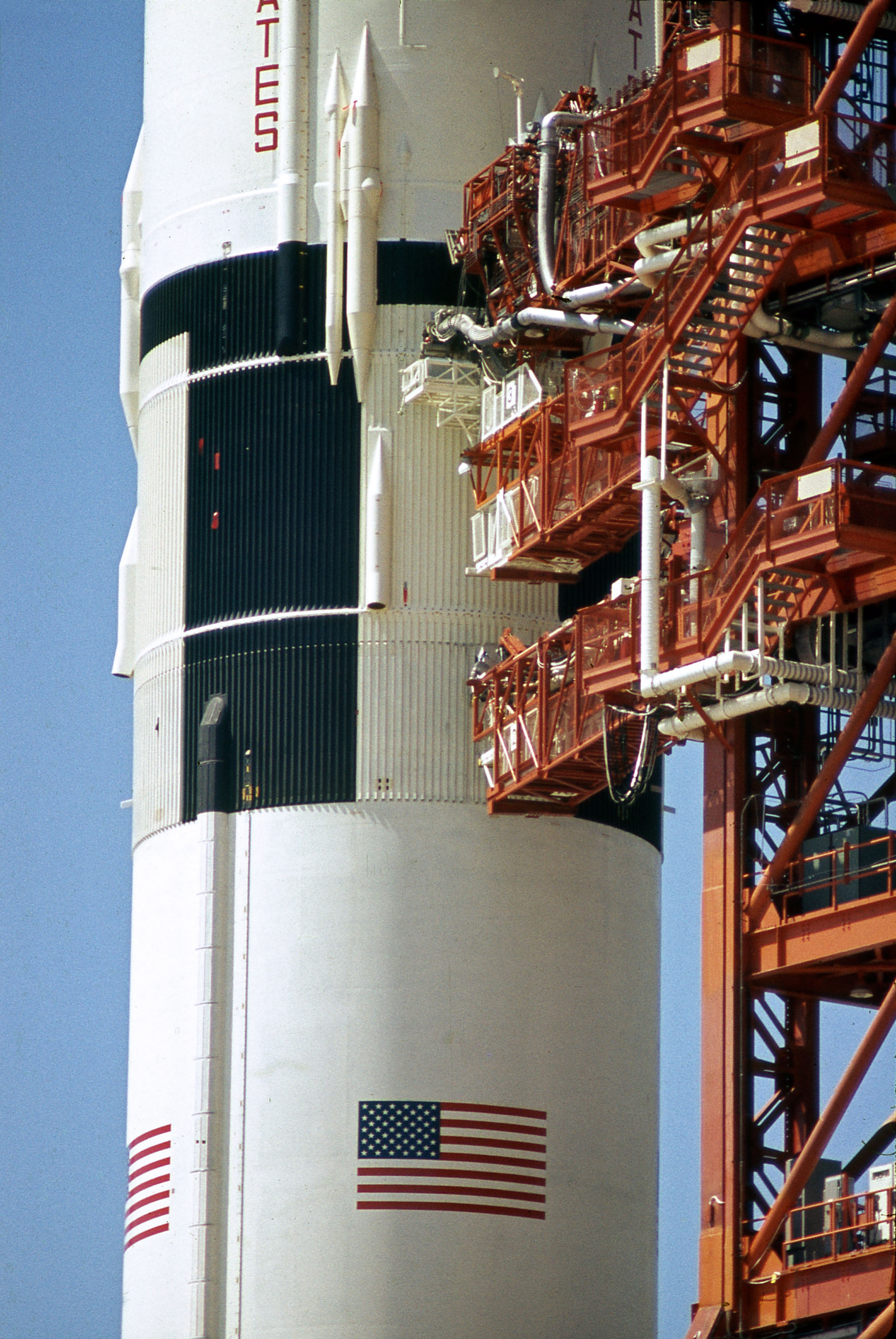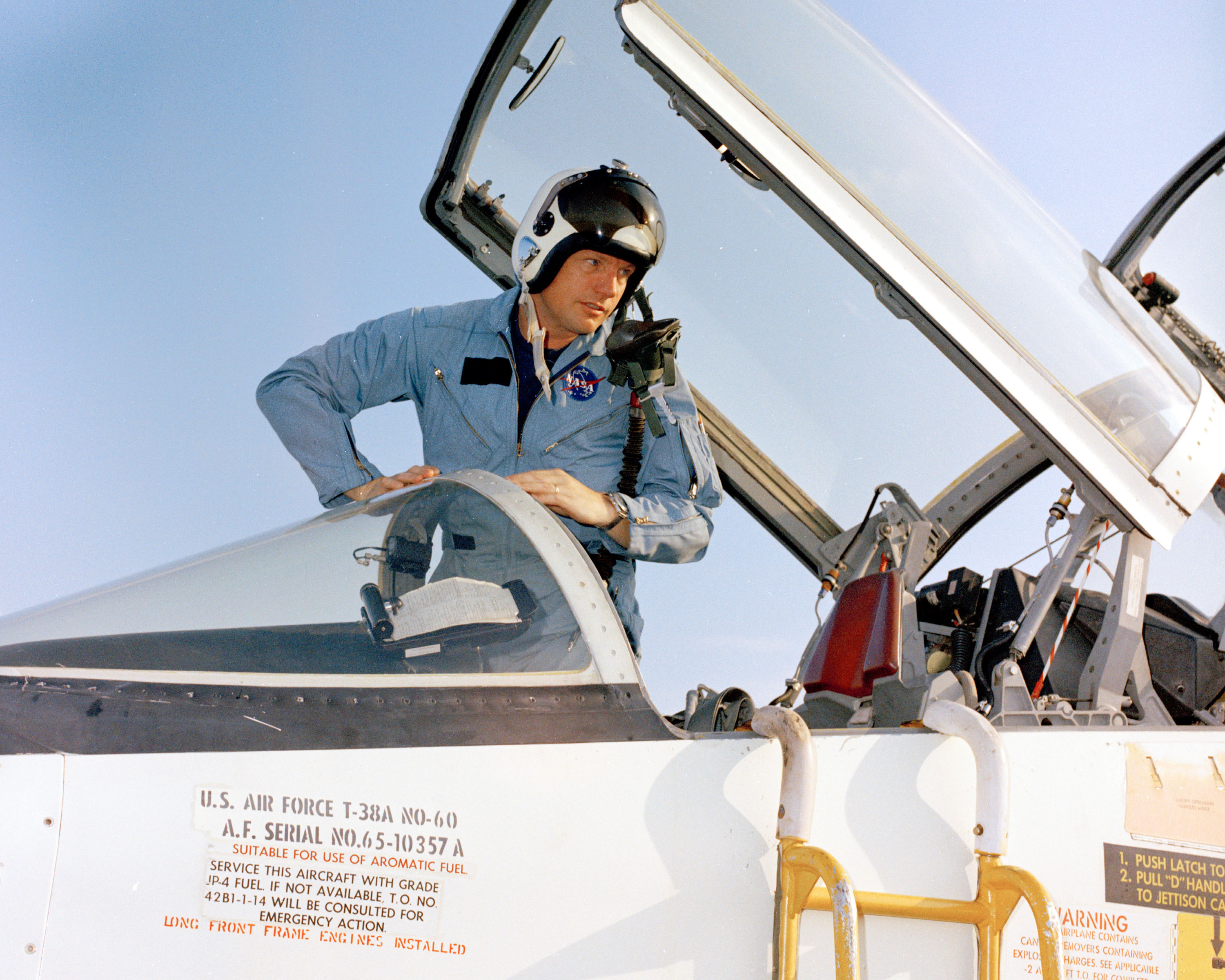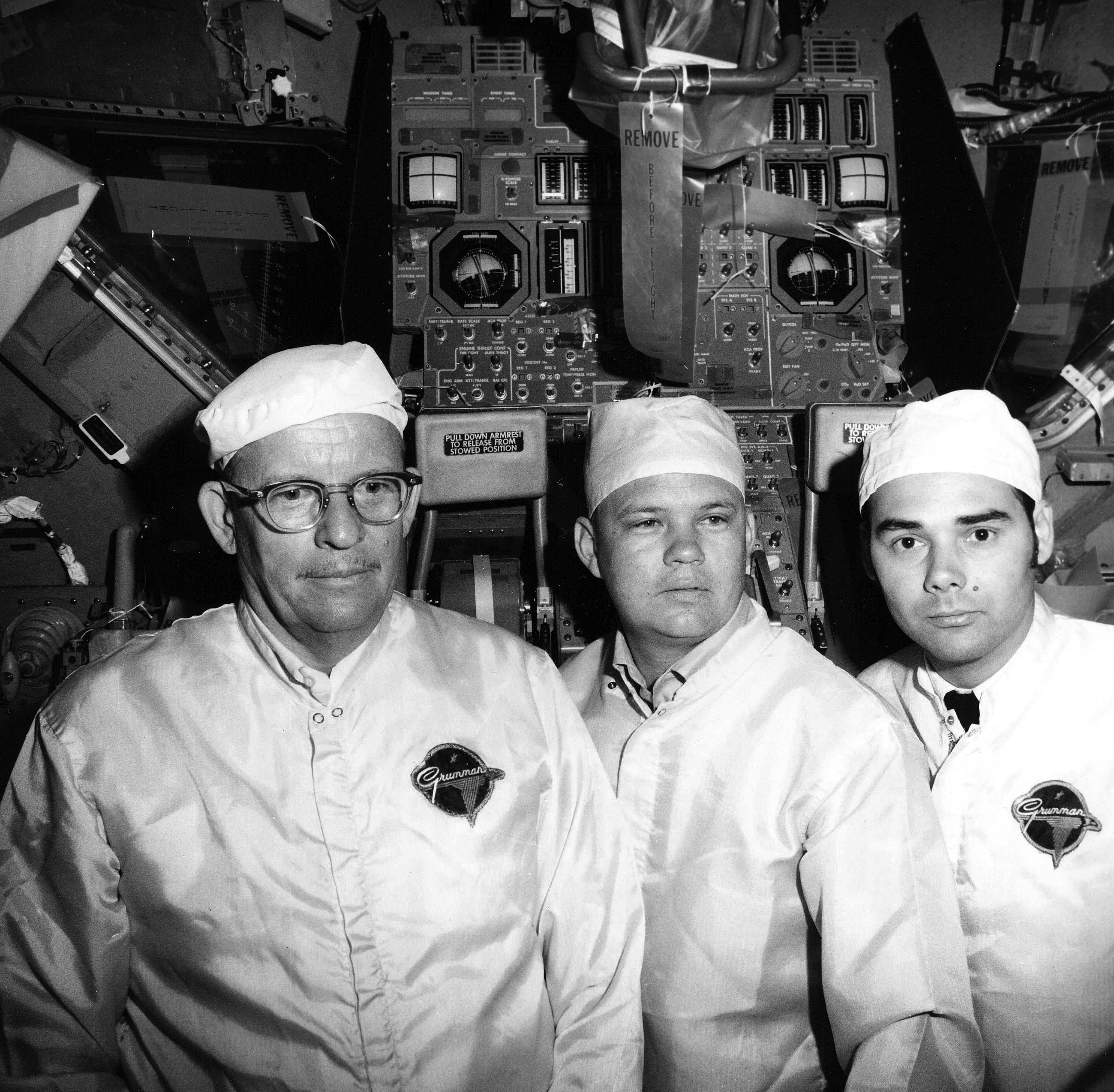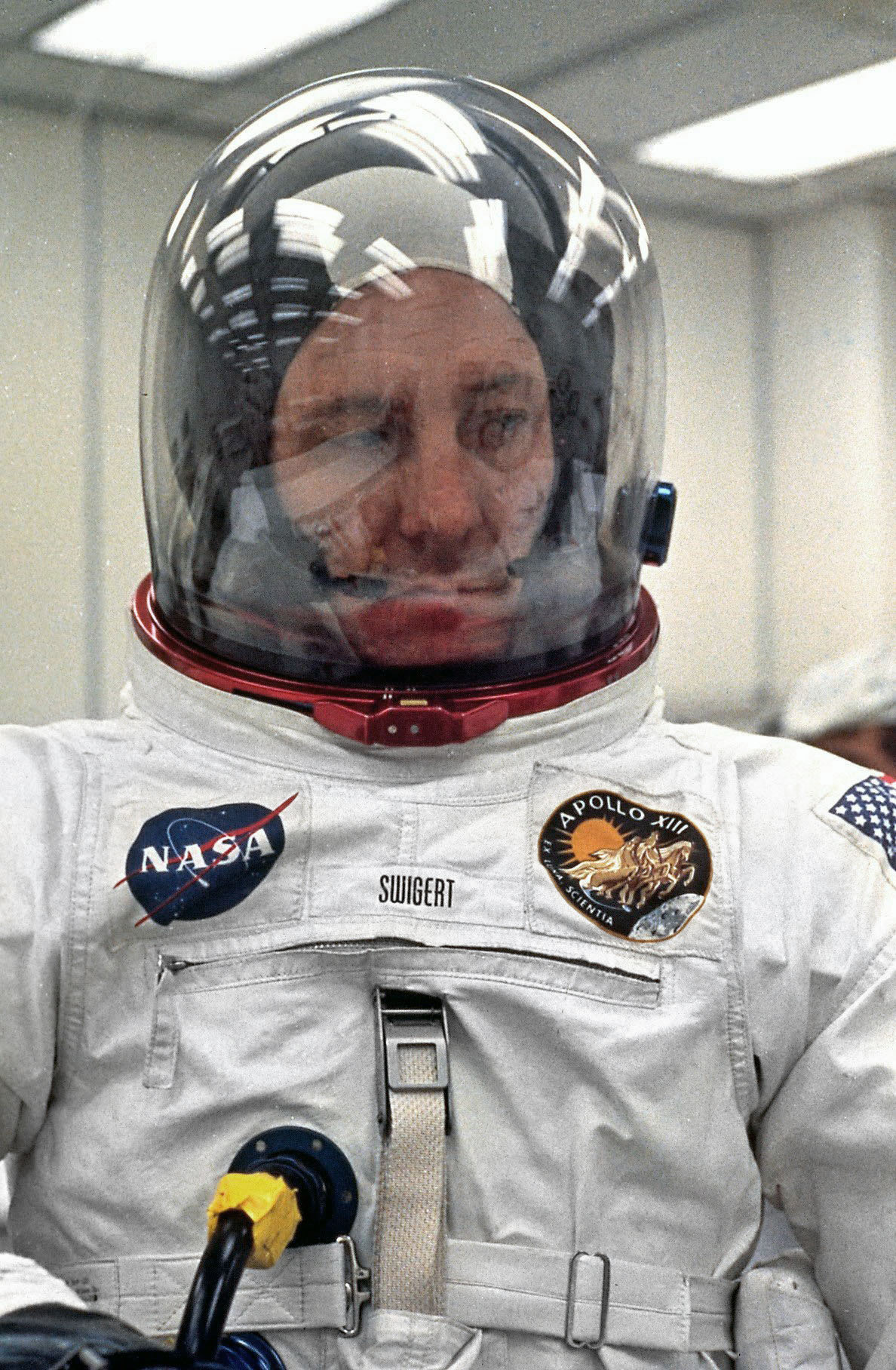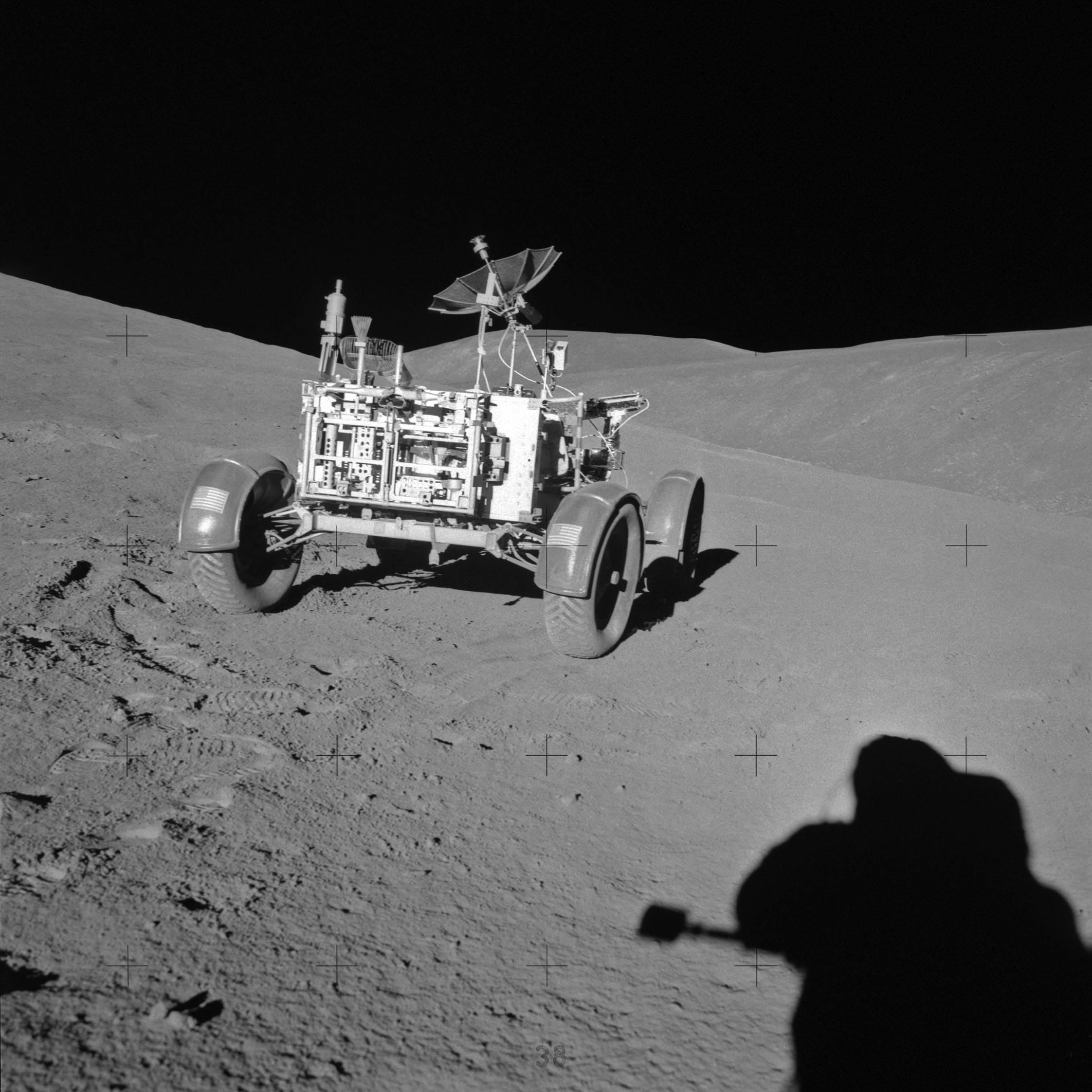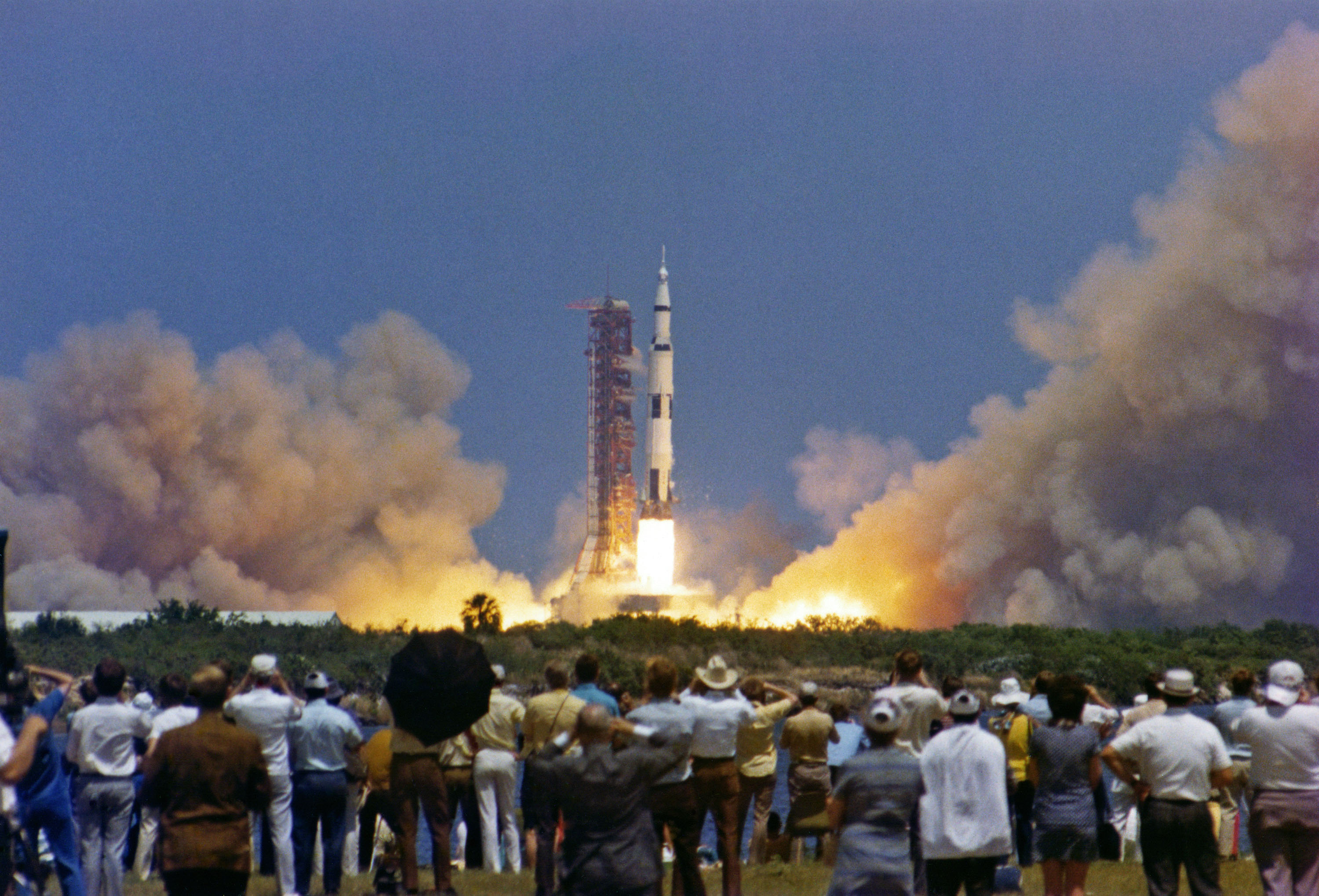Moonshots and Snapshots of Project Apollo
Manned Spacecraft Center Gag Photo
One of several gag photos taken at the Manned Spacecraft Center (MSC) on April 1, 1966, during the session for the Apollo 1 crew portrait. After a meeting during which the crewmen expressed concerns about the flammable material in the cabin, the men gave a copy of the photo to NASA’s Joe Shea. The caption read, “It isn’t that we don’t trust you, Joe, but this time we’ve decided to go over your head.” This image, and the others in this gallery, are from the book "Moonshots and Snapshots of Project Apollo" (University of New Mexico Press, 2015) by John Bisney and J.L. Pickering.
The Saturn’s Tumbling Empty Second (S-IVB) Stage
The Saturn’s tumbling empty second (S-IVB) stage is seen from Apollo 7, following the crew’s rendezvous with it on the afternoon of October 12, 1968. The astronauts approached to within seventy feet as part of a simulated rescue by the Apollo command module (CM) of a stranded lunar module (LM) in lunar orbit, which was also a key test of their main engine. They hovered nearby for about thirty minutes. The stage’s single J-2 engine is on the aft end. The four open adapter panels would be jettisoned on missions carrying an LM. The S-IVB decayed in Earth orbit on October 18, 1968.
Apollo 8 Launch Press Photographers
News photographers record the launch of Apollo 8 from the LC-39 Press Site.
Apollo 9 Command Module
In this photo from Apollo 9 taken by David Scott from the command module (CM), Rusty Schweickart reaches the top of the handrail. The lunar module (LM) rendezvous radar antenna’s shaft is at right. Once outside, Schweickart used the radio call sign “Red Rover” because of his rust-colored hair. He was attached to the LM with a twenty-five-foot tether.
Rollout of the Apollo 10 Saturn V
During the rollout of the Apollo 10 Saturn V, three service arms extend to the vehicle from the Launch Umbilical Tower (LUT). The S-II intermediate arm at top provided fueling and was retracted at launch; the S-II aft arm (center), which provided access, and the S-IC forward arm (below, providing pneumatic, electrical, and air-conditioning interfaces) were both retracted before launch. Two of the eight ullage motors are visible on the Saturn’s interstage, to the left of the center arm. These motors fired to briefly nudge the stage forward, to settle its fuel prior to ignition of its five J-2 main engines. The two fairings to the right of the service tunnel above the interstage housed liquid hydrogen feed lines.
Apollo 11 commander Neil Armstrong Arrives at Patrick Air Force Base
Apollo 11 commander Neil Armstrong arrives at Patrick Air Force Base (AFB) on June 17, 1969, from Ellington AFB. Deke Slayton was in the second seat on the flight from Houston. Armstrong had flown the Lunar Landing Training Vehicle (LLTV) twice the day before at Ellington, bringing it to three hundred feet before practicing powered descents to the moon. All three crewmen spent time in the Kennedy Space Center (KSC) simulators on June 17. That eve¬ning, after the day’s flight readiness review, Apollo Program Director Sam Phillips announced that the launch was on for July 16.
Grumman Aerospace Technicians in the LM-6
Grumman Aerospace technicians in the crew compartment of LM-6 on August 27, 1969, during closeout operations inside the Spacecraft Lunar Module Adapter (SLA) near the top of the Apollo 12 Saturn V stack. They would leave with the “Remove Before Flight” ribbons on the lunar module’s (LM) windows and instrument panels (behind them). Rollout to Pad 39A occurred twelve days later.
Breaking space news, the latest updates on rocket launches, skywatching events and more!
Apollo 13 Command Module Pilot Jack Swigert,
Apollo 13 Command module pilot (CMP) Jack Swigert, suited for launch on April 11, 1970. A lifelong bachelor with an eye for women, Swigert, thirty-eight, was turned down by NASA twice before being selected in 1966. He was elected to the US House of Representatives from Colorado in 1982, but he died from cancer before taking office.
Apollo 14 Saturn V
The Apollo 14 Saturn V is launched from Pad 39A on January 31, 1971.
Apollo 15 astronaut Jim Irwin Photographs the Lunar Roving Vehicle
Apollo 15 astronaut Jim Irwin photographs the Lunar Roving Vehicle (LRV) at Geology Station 2, during extravehicular activity (EVA) 1 on July 31, 1971.
Apollo 16 from the LC-39 Press Site
Apollo 16 as seen from the LC-39 Press Site, seconds after liftoff at 12:54 p.m. (EST) on April 16, 1972. Spectators sweltered in 88-degree-Fahrenheit temperatures, with 44 percent humidity— the hottest of any Apollo launch.

Space.com is the premier source of space exploration, innovation and astronomy news, chronicling (and celebrating) humanity's ongoing expansion across the final frontier. Originally founded in 1999, Space.com is, and always has been, the passion of writers and editors who are space fans and also trained journalists. Our current news team consists of Editor-in-Chief Tariq Malik; Editor Hanneke Weitering, Senior Space Writer Mike Wall; Senior Writer Meghan Bartels; Senior Writer Chelsea Gohd, Senior Writer Tereza Pultarova and Staff Writer Alexander Cox, focusing on e-commerce. Senior Producer Steve Spaleta oversees our space videos, with Diana Whitcroft as our Social Media Editor.

